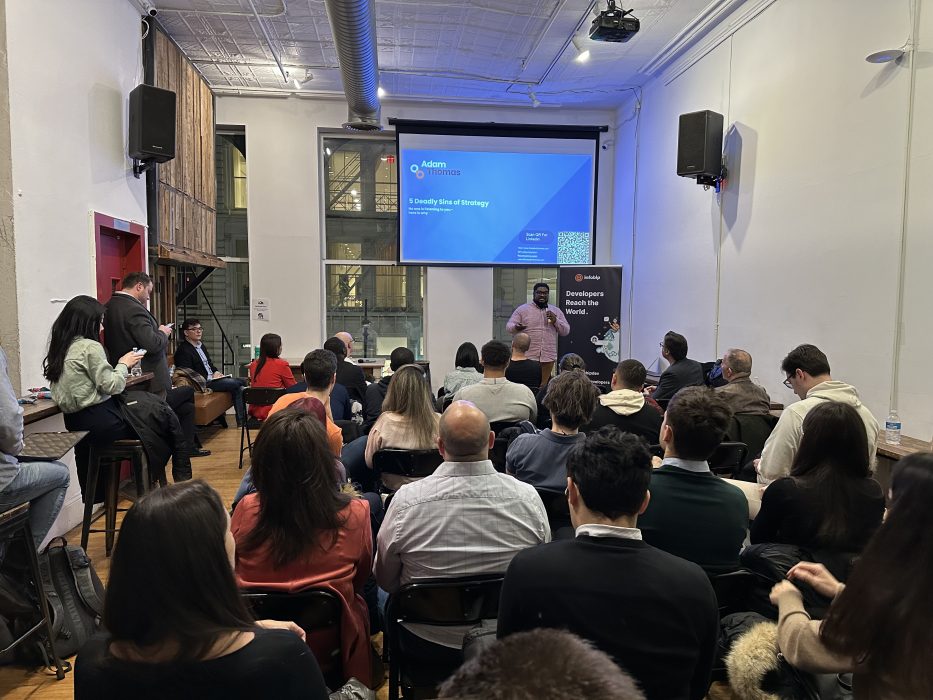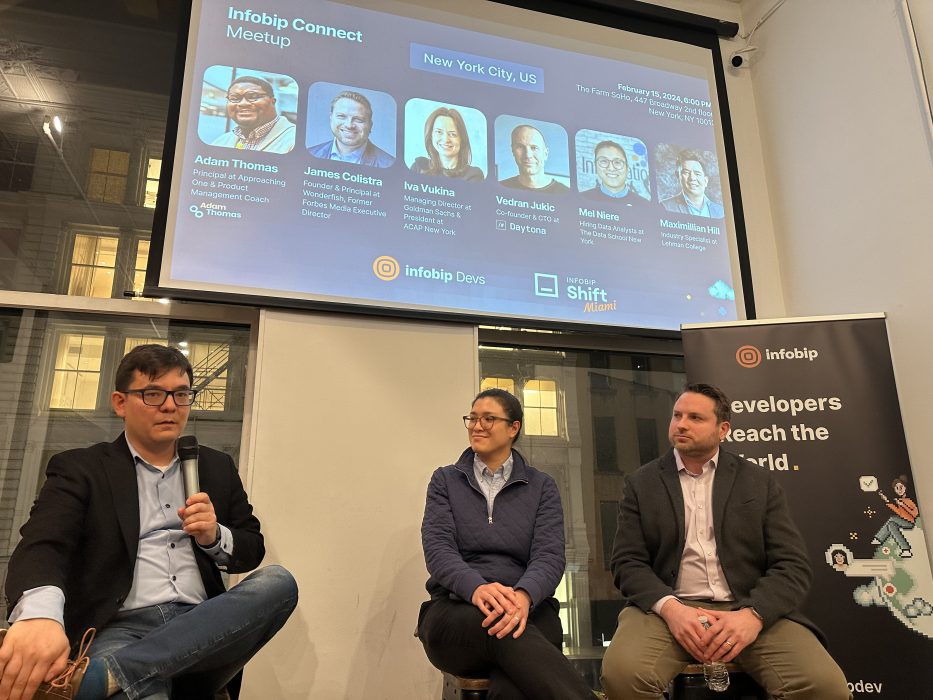In the pulsating heart of New York City, Infobip Connect Meetup unfurled its second chapter last month. Amongst the vibrant startup and development community, luminaries from various industries gathered, igniting conversation and collaboration.

Infobip Connect meetup, NY edition
However, it was the insights by James Colistra, a luminary in his own right, that left a mark on our collective consciousness. Colistra, the former Integrated Partnership Marketing Executive Director at Forbes, turned startup maven with Wonderfish, graced the event as a panelist. His astute observations, coupled with a profound understanding of the tech ecosystem, illuminated the audience. In an exclusive interview, he delved deeper into the nuances of modern marketing strategies, offering pearls of wisdom for aspiring entrepreneurs.

James Colistra, Founder and Principal, Wonderfish
Navigating the AI era: empowering creativity in marketing
In an era defined by rapid technological advancement, the role of artificial intelligence (AI) looms large over every industry, none more so than marketing. With the rise of generative AI, there’s a palpable concern among creatives about the potential existential threat it poses to human ingenuity. However, as James observes, AI may enhance the speed of creativity, but it can never replace the human touch.
Sometimes it might feel that way given how quickly generative AI has advanced in the past few years. However, the way I see it, humans still need to be in control. The models will only create creative content when prompted in the right way. So, while it speeds up creativity, I don’t think it will replace humans in marketing anytime soon. Thus, while it is certainly changing the speed at which ideas can be fleshed out, we do need to be careful that we aren’t rushing to the wrong ideas based on improper input.
Evidently, it’s not the tool itself but how it’s wielded that truly matters. By harnessing AI as a tool for inspiration rather than a substitute for innovation, marketers can unlock new realms of creativity while safeguarding the essence of human ingenuity.
Furthermore, James’ reflections on the incorporation of Large Language Models (LLMs) into startup strategies shed light on the evolving landscape of marketing technology. In a world where customization and adaptability are paramount, the choice between open and closed LLMs becomes a strategic imperative for startups seeking to secure their future.
He advises:
There are many use-cases for open and closed LLMs. Marketers can customize open-source LLMs to suit their specific needs. They have the flexibility to fine-tune models, integrate them into existing marketing platforms, and develop tailored solutions that address unique business requirements. Open-source models can be cheaper, but the best of the best performing models tend to be closed source because that’s a big part of how companies are monetizing their work. Right now, everything is still so new, and every company should be testing to see what works best for them.
Branding: the overlooked essential

James’ emphasis on the importance of branding underscores a fundamental truth often overlooked in the startup landscape. In a world inundated with choices, branding serves as the linchpin of consumer perception—an initial spark that ignites the flames of interest and engagement.
He analogizes,
To me, building the brand is as important as the product itself. It’s like if you were to go on a date with someone, they could be the most amazing person in the world, but if there is not an initial spark when they walk in the room, the chances of a future relationship are slim. I think people make purchase decisions in a similar way, so you have to make sure from the very beginning you are showcasing the brand with clean, professional imagery, and it’s consistent across all touchpoints.
This admonition to prioritize branding from the outset resonates as a timeless reminder of its enduring significance in the entrepreneurial journey.
Finally, he shared a parting nugget of wisdom with us —a marketing hack distilled from a seminal research paper—that serves as a poignant reminder of the importance of balance in advertising strategies.
Back in 2013, a really important research paper was released by Les Binet and Peter Field. It argued that the most effective advertising strategies are focused 60% towards long-term brand building and 40% towards short-term activation. I think the percentages might depend on your brand, but it’s still incredibly important to not put all of your efforts on short-term marketing, while neglecting long-term opportunities. Short-term activation is targeted to warm leads or lower funnel strategies, while long-term is about building awareness amongst those who might not be ready to make a purchase. You always have to balance both effectively to be successful.
Clearly, in an age of instant gratification and fleeting attention spans, the allure of short-term activation must be tempered with a steadfast commitment to long-term brand building.
It’s safe to say that Infobip Connect Meetup provided a platform for James Colistra to share invaluable insights on navigating the challenges of modern marketing. His perspectives underscored the enduring importance of human creativity in the face of AI advancements and highlighted the critical role of branding in startup success.